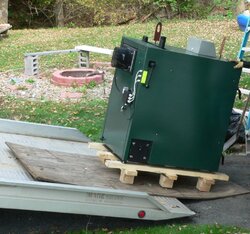As I've read through the forums I see most of the discussion pertains to stoves and fireplaces, but there are some who use wood burning boilers. I've been looking at, reading about, and researching wood boilers quite a bit. I really like the gasification types, like the EKO, but I'm having trouble convincing myself that they're worth the extra cost. From what I've seen they're about twice the cost of a standard wood boiler, maybe a little more. I have two issues that I'm looking for some advice on.
First, is the more efficient gasification boilers worth the extra cost? Does anyone have experience with both? How much less wood do you burn?
My other issue is the size of the boiler. I've been considering 140kbtu and 200kbtu units. Initially, I would be heating a house that requires about 90kbtu so both would be overkill. I would like to eventually have the ability to heat the basement and a separate building (about 150 feet away). What and how serious are the drawbacks to having too large a unit? Would you expect too much down time that would be smoldering and causing creosote? Would heat storage cancel out the drawbacks and make the larger unit a better option?
Any input would be appreciated. Thanks.
First, is the more efficient gasification boilers worth the extra cost? Does anyone have experience with both? How much less wood do you burn?
My other issue is the size of the boiler. I've been considering 140kbtu and 200kbtu units. Initially, I would be heating a house that requires about 90kbtu so both would be overkill. I would like to eventually have the ability to heat the basement and a separate building (about 150 feet away). What and how serious are the drawbacks to having too large a unit? Would you expect too much down time that would be smoldering and causing creosote? Would heat storage cancel out the drawbacks and make the larger unit a better option?
Any input would be appreciated. Thanks.



